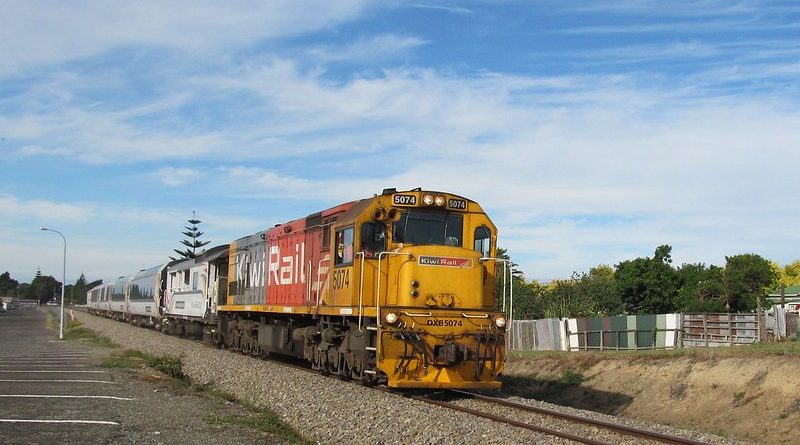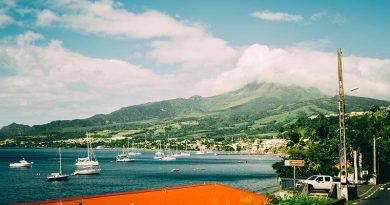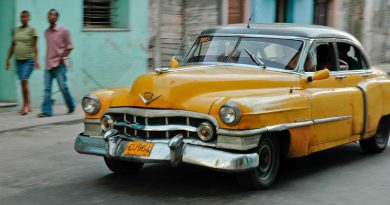Tough Trains of Zambia
Travelling by train in Zambia was once an exciting, beautiful journey. Different railways were offered, transporting the willing travellers from region to region and offering a genuine look into Zambian culture. However, a loss of funding for the trains has forced the stalling of maintenance, which has lead to a number of railways being stopped. The decrease in train activity has a huge effect on Zambia. Many locals depend on railways as their only form of long distance transport. In addition, much of Zambia’s economy is held up by goods that can only be carried via trains.
However, a few trains do run. They all used to operate on a frequent basis, but budget cuts now force them to only travel a few times a week. Even then, Zambian trains are known for postponements. Trains rarely leave on schedule and could be delayed for up to a day. When one boards the train, they should also expect delays there as well and can look forward to a number of derailed train carriages on the sides of the tracks. However, most travellers who are up for a bit of adventure and who have a large amount of time have quite enjoyed travelling by train in Zambia. Just be sure to bring books, extra food, and interesting travel partners.
TAZARA RAILWAY
The TAZARA Railway is Zambia’s most popular train system. Linking Tanzania and Zambia, TAZARA transports both freight and passengers on a 1,860km track. Built as a result of a joint effort between China, Tanzania, and Zambia in 1976, the railway symbolizes friendship between the three companies. TAZARA is also known as the “Great Uhuru Railway” or Great Freedom Railway because of the role it played in the liberation and decolonization of many countries in Southern Africa. Because of the liberation wars in Angola, Mozambique, and South Africa, Zambia’s only route to sea (and a thriving economy) was in the north. The railway continues to operate as one of Zambia’s major trade routes, transporting the all-importantcopper, in addition to other imported goods.
In recent years, TAZARA has suffered from inadequate funding that has led to a deterioration of its railway systems. TAZARA employees strike frequently because many aren’t paid, and those in turn cause delays. However, TAZARA is also often delayed for other reasons; derailments and accidents aren’t too surprising, as is running out of fuel or stopping for delays from other trains. Deterioration of the railway is detrimental for the locals who live in small towns along the railway, as their livelihood comes from selling their goods to travellers twice a week.
Start Location: Dar es Salaam, Tanzania
Dar es Salaam is Tanzania’s largest and richest city and one’s journey begins at the TAZARA Railway Station located within the city. TAZARA was a huge undertaking for Tanzania, Zambia, and China. Construction was meant to last seven years, but with the effort of 50,000 Tanzanians and 25,000 Chinese men, the railway was finished two years ahead of schedule. Workers followed the plans of 12 Chinese surveyors who travelled by foot for nine months from Dar es Salaam to Mbeya to choose the right path and alignment for the tracks. While constructing the railway, construction camps were set up, complete with vegetable gardens and paw-paw and banana trees to provide shade and food for the workers during their free time. TAZARA is sometimes regarded as the greatest engineering effort of its kind since World War II.
Highlights along the way :
Mikumi National Park:
Mikumi is the fourth largest national park in the country and TAZARA passes right along it. While riding through, you’ll find vegetation native to the savannah, including acacia, palm, tamarinds, and baobab. Here you’ll also find amazing views of rock formations and African wildlife.
Selous Game Reserve: On the opposite side of the train, you’ll see the Selous Game Reserve, one of the largest faunal reserves in the world; UNESCO designated it as a World Heritage Site for its untouched natural beauty and diverse wildlife.
There’s a good chance of spotting elephants, crocodiles, buffalo, hippopotami, and African Wild Dogs.
Mpanga River Bridge:
Eventually, the train will cross the Mapanga River valley via a bridge held up by three pillars at 50m high.
Njombe:
TAZARA arrives later into Njombe, a region in Tanzania known for its coffee and tea. Sites include large estates and groves of bamboo and fields of maize.
Udzungwa Mountains National Park:
You’ll also get a view of this national park which boasts a beautiful tropical rainforest home to a number of endemic species.
Makambo :
By now you’ll be in Makambo, which is a meeting point for TAZARA and the Tanzania Zambia Highway. Many of Makambo’s residents depend on travellers riding the train, and you won’t be able to miss the young children selling different products such as roasted chicken, chewing gum, cigarettes, and cooked maize.
Mbeya:
Mbeya will be the second major TAZARA station you’ll stop at. If you so desire, you can explore the area through trekking and forest walking.
End Location: Kapiri Mposhi, Zambia
Expect to be on the train for around two days, but depending on delays and accidents, you could be on the train for even longer.
THE ZAMBEZI EXPRESS
The Zambezi Express transports travellers from Livingstone to a variety of cities. Prior to 2006, the train offered four classes of accommodation, ranging from economy with hard, basic seats, and 2-berth private compartments. However, the train now only has economy seats.
It’s quite a slow train, suffering from delays and road hazards, but it’s still used for practical reasons by locals as well as for the scenery of Zambian villages and people.
MULOBEZI Railway :
The Mulobezi Railway is the toughest of the trains that still runs today. Built between the years of 1905 and 1930, it stretched from Livingstone in southern Zambia to Mulobezi in western Zambia. Since its creation, the railway has had zero upgrades and is in a terrible state. However, the path it takes is a necessary one for many who live in the area and the train still operates once per week. It’s vital especially during the rainy season in Zambia, when many roads are impossible to travel on.
For a journey of just 163 km, the train takes two days. The paths are so worn down that conductors are forced to operate the train at a much slower speed, so as to avoid derailments. In addition, the Mulobezi railway lacks lighting, making travel at night difficult and hazardous.
Many people who ride the train sit on the floor, due to poor seating conditions, but the journey is necessary, especially for those who plan on carrying their livestock in separate carriages. Many people are arguing for government involvement and funding but steps are being taken at a very slow pace. Tourists that end up on the train often can’t believe it’s still functioning and officials are worried that it creates a bad picture for future tourism. Both the government and Zambia Railways have promised to look into restructuring the railway, but there has been a lack of political will, leading to a lack of money and progress.




